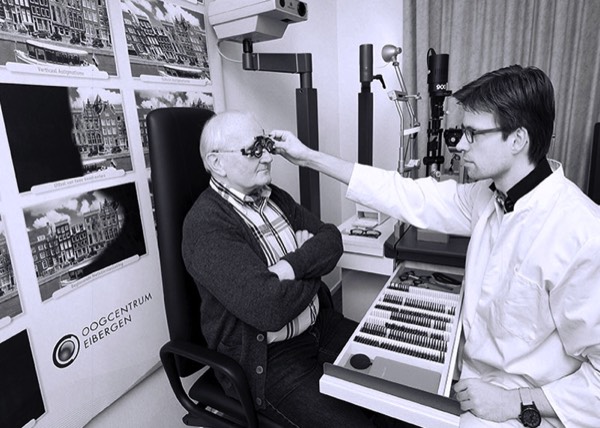Diagnosing floaters
At your first visit in our office we examine your eyes thoroughly. We are interested in your complete ophthalmologic history. We would also like to know whether you are suffering from diabetes mellitus or autoimmune diseases, and which medications you are taking. Did you have an eye surgery or a laser treatment before? We are checking the whole anamnesis against a standard protocol. Then we measure the visual acuity and the intraocular pressure before you are given pupil dilating eye drops. We recommend bringing a driver as afterwards you won't be able to drive for several hours. The next step is an examination with a Optos retina scanner. This currently is the most recent appliance for getting an overview of the complete retina. You can more quickly find retinal disorders and you can very well find the floaters. Usually one frame is good enough to give an estimate on the possible success of a laser treatment. Additionally you have the chance to see and understand the reason for your disorder. Afterwards there is an examination at the slit lamp usually using a contact lens. Occasionally we also perform a Spectralis OCT 3D exposure of the macula and a slit lamp photo documentation. Afterwards we come together and talk about the options of treatment.
At your first visit in our office we examine your eyes thoroughly. We are interested in your complete ophthalmologic history. We would also like to know whether you are suffering from diabetes mellitus or autoimmune diseases, and which medications you are taking. Did you have an eye surgery or a laser treatment before? We are checking the whole anamnesis against a standard protocol. Then we measure the visual acuity and the intraocular pressure before you are given pupil dilating eye drops. We recommend bringing a driver as afterwards you won't be able to drive for several hours. The next step is an examination with a Optos retina scanner. This currently is the most recent appliance for getting an overview of the complete retina. You can more quickly find retinal disorders and you can very well find the floaters. Usually one frame is good enough to give an estimate on the possible success of a laser treatment. Additionally you have the chance to see and understand the reason for your disorder. Afterwards there is an examination at the slit lamp usually using a contact lens. Occasionally we also perform a Spectralis OCT 3D exposure of the macula and a slit lamp photo documentation. Afterwards we come together and talk about the options of treatment.

